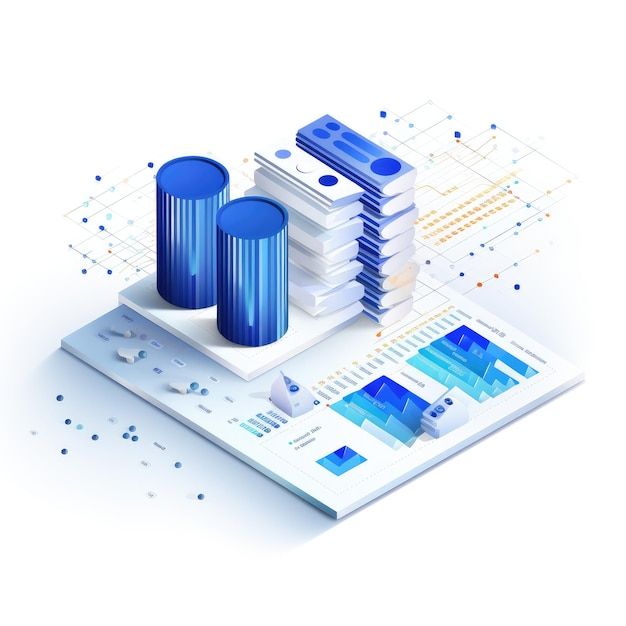
DBMS architecture, data Models and database approach
Database Management System (DBMS) is a software that enables users to interact with databases, providing an organized and efficient way to store, retrieve, and manage data.
Characteristics of Database Approach
Data Independence
- DBMS allows separation between the physical storage of data and the way users perceive it.
- Example: If the structure of a table changes, applications relying on it won't be affected.
- Data independence enhances system flexibility, making it easier to adapt to evolving business needs.
Data Integrity
- Data integrity Ensures accuracy and consistency of data by enforcing constraints and rules.
- Example: A database might enforce a unique constraint on an employee ID to prevent duplicates.
- Referential integrity ensures relationships between tables are maintained, preventing orphaned records.
Data Security
- DBMS provides mechanisms to control access to data, ensuring only authorized users can manipulate it.
- Example: Role-based access control restricting certain users from modifying sensitive information.
- Auditing features track user activities, aiding in identifying and addressing security breaches.
Concurrency Control
- Manages simultaneous access to data to prevent conflict and ensure consistency
- Example: Two users attempting to modify the same record simultaneously - DBMS ensures one operation is completed before the other.
- Techniques like locking and timestamp-based methods help maintain data consistency in multi-user environments.
Data Redundancy Reduction
- Minimizes data duplication, saving storage space and reducing the risk of inconsistencies.
- Example: Storing customer information in a separate table linked by a unique identifier instead of duplicating it in every order entry.
- Normalization is a technique used to eliminate redundancy by organizing data in a structured manner.
Query Language
- DBMS offers a query language (e.g., SQL) for users to interact with the database.
- Example: Using SQL SELECT statements to retrieve specific data from a table.
- Advanced query optimization techniques enhance the efficiency of data retrieval operations.
DBMS Architecture
- Three-Tier Architecture (Client/Server Model)
- Centralized Architecture
- Distributed Architecture
- Peer to Peer Architecture
Three-Tier Architecture (Client/Server Model)
- Divides the DBMS into three components - client, application server, and database server.
- Example: An application (client) communicates with the server, which manages interactions with the database server.
Presentation Layer
- The first tier that interacts with users and displays information through a user interface.
- Example: Web browsers or applications used by users to access and view data.
Logic/Processing Layer
- The second tier that handles data processing, business logic, and application functionalities.
- Example: Application servers or middleware that execute operations based on user requests.
Data Layer
- The third tier where data storage and management occur, often using database servers.
- Example: Database management systems (DBMS) like MySQL, PostgreSQL, or Oracle used to store and retrieve data.
- This architecture facilitates scalability, allowing the system to handle a growing number of users and data.
Centralized Architecture
- All components, including the database, are on a single machine.
- Example: Small-scale systems where a single server handles both application processing and database management.
- All data management tasks, including updates and backup , are centralized in one location.
- Centralized architectures are easier to manage but may face limitations in terms of scalability and fault tolerance.
Distributed Architecture
- Components are distributed across multiple machines, providing scalability and fault tolerance.
- Example: Large-scale systems where different servers handle specific tasks, enhancing performance and reliability.
- Load balancing techniques ensure even distribution of workload among the distributed servers.
- Distributed architecture allows for data replication and synchronization among nodes to maintain data consistency.
- Example: Replicating customer data across multiple servers to ensure availability and reliability.
Peer to Peer Architecture
- In a peer-to-peer architecture, all network nodes have equal status and can function as both clients and servers.
- Example: File-sharing networks like BitTorrent, where users can upload and download files directly from other users' devices.
- Data management tasks are decentralized, with each node responsible for storing and sharing a portion of the data.
- Example: Blockchain networks like Ethereum or Bitcoin, where nodes collectively maintain a distributed ledger of transactions.
- Peer-to-peer architectures often lead to better fault tolerance as there is no single point of failure.
Data Models
- Relational Data Model
- Hierarchical Data Model
- Network Data Model
- Object Oriented Data Model
- Document Data Model
Relational Data Model
- Represents data as tables with rows and columns, establishing relationships between them.
- Example: A database containing tables for employees, departments, and projects linked by common keys.
- Normalization techniques help maintain data integrity by eliminating data anomalies.
Hierarchical Data Model
- Represents data in a tree-like structure with parent-child relationships.
- Example: Organizing organizational data with a CEO at the top, followed by departments, teams, and employees.
- Hierarchical models are suitable for representing certain real-world hierarchical relationships, but they may lack flexibility because.
- Example: Adding a new department or rearranging the hierarchy may involve significant modifications to the existing model.
Network Data Model
- Similar to the hierarchical model but allows multiple parent-child relationships.
- Example: A university database with students linked to multiple courses and instructors.
- This model supports more complex relationships, but it can be challenging to design and maintain.
Object Oriented Data Model
- In Represents data as objects, combining data and methods.
- Example: A multimedia database storing images, videos, and audio as objects with associated methods.
- Object-oriented models are well-suited for systems where real-world entities can be represented as objects.
Document Data Model
- Stores data in flexible, JSON-like documents, suitable for semi-structured data.
- Example: A content management system storing articles as documents with varying fields.
- Document-oriented databases excel in handling unstructured or semi-structured data, providing flexibility in schema design.
Conclusion
we have explored database management system, Characteristics of database approach, DBMS architecture, client/server, data Models.